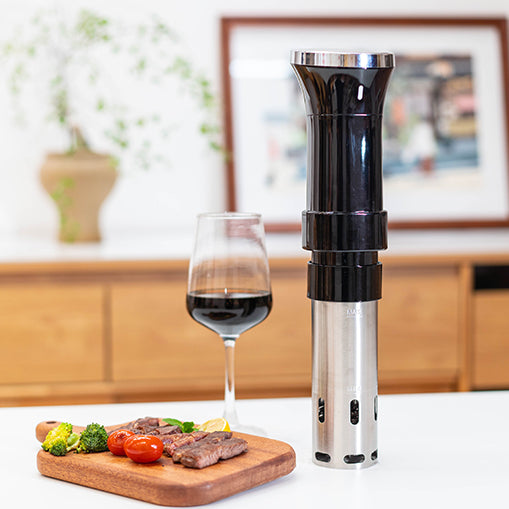Turkish coffee is a method of coffee preparation that has been practiced for centuries, originating from the Middle East. This distinctive method is renowned for its strong, thick, and aromatic brew, made in a small pot called a 'cezve.' Turkish coffee is not just about the drink; it's a cultural tradition, often accompanied by fortune telling from the coffee grounds left in the cup. If you are wondering how does Turkish coffee work, you come to the right place. This guide will walk you through the steps to create this rich, flavorful coffee right in your kitchen, from selecting the right beans to serving it with authentic flair. Let’s get started!

What Is Turkish Coffee?
Turkish coffee is a distinctive style of coffee that originated in the Middle East and gained popularity across Eastern Europe and the Mediterranean. What sets it apart from other coffee styles is its very fine grind, almost to the consistency of cocoa powder, which is then simmered with water and often sugar in a special pot known as a cezve or ibrik. This method allows the grounds to fully blend with the water, creating a thick, strong brew that retains the coffee grounds in the cup.
Turkish coffee is not filtered and is typically served with the grounds settling at the bottom of a small, specially designed cup. It is known for its bold, robust flavor and the layer of foam on top, which is highly prized among enthusiasts. This type of coffee might appeal particularly to those who appreciate a strong and aromatic cup of coffee that can be enjoyed slowly, often as part of a social or cultural ritual.
What You’ll Need for Brewing Turkish Coffee
Before learning how to make Turkish coffee, you'll need a few specific tools that are key to achieving its unique taste and texture. Here's what you'll need:
1. Cezve/Ibrik: This is a small, usually copper or brass pot with a long handle, specifically designed for making Turkish coffee. The narrow neck helps retain the foam, which is crucial for good Turkish coffee.
2.Coffee: Turkish coffee is typically made with Arabica beans. The beans should be ground fresh right before brewing to preserve their flavor and aroma.
3. Turkish Coffee Cups (Fincans): These are small porcelain cups used to serve Turkish coffee. They are similar in size to espresso cups but are often elaborately decorated.
4. Fresh Water: The quality of the water is important as it can affect the overall taste. Use fresh, cold water for the best results.
5. Sugar (optional): Depending on personal preference, sugar can be added to the coffee before brewing. It is not stirred in after the coffee is cooked.
6. Spoon: A small spoon is needed for stirring the coffee and sugar mixture as it begins to heat.
7. Heat Source: Turkish coffee is traditionally made over a low flame, but any heat source that allows for careful temperature control can be used.
How Is Turkish Coffee Made? (Step-by-Step)
Making Turkish coffee is simple. The entire process from start to finish should take about 5-10 minutes, depending on the heat source and the number of servings. Here's a detailed step-by-step guide about how Turkish coffee is made:

1. Measure Your Ingredients:
For each cup of Turkish coffee, measure about 1 heaped teaspoon (or up to 2 teaspoons for a stronger brew) of finely ground coffee.
If you like your coffee sweet, add sugar to taste at this stage (from no sugar, to medium, to very sweet).
Measure out about 3 ounces (about 90 ml) of cold water per cup.
2. Combine Ingredients in the Cezve:
Pour the water into your cezve. Add the coffee grounds and sugar (if using) without stirring. Place the cezve on a low heat source, ensuring that the coffee doesn’t start to boil too quickly.
3. Watch for the Foam:
As the coffee begins to warm, a dark foam will start to form on the surface. Before the coffee boils, use a teaspoon to scoop some of the foam into each of your Turkish coffee cups.
Continue heating the coffee until it just begins to boil and the foam rises. This is crucial: the key to perfect Turkish coffee is achieving maximum foam.
4. Pour and Allow the Coffee to Settle:
Immediately remove the coffee from the heat to prevent it from boiling over. Slowly pour the coffee into the cups, allowing the foam to divide evenly among them.
Pouring slowly also lets the fine grounds settle at the bottom of the cezve, reducing the amount that ends up in the cups.
5. Serving:
Turkish coffee is traditionally served immediately after brewing. It’s usually accompanied by a glass of water to cleanse the palate before drinking the coffee.
Variations of Turkish Coffee
While the basic ingredients of Turkish coffee remain constant, there are several regional variations that add a unique twist.

- Sweetness Levels: Turkish coffee offers a range of sweetness levels, from Unsweetened (Sade) with no sugar, to Little Sweet (Az Şekerli) for a hint of sweetness, Medium Sweet (Orta Şekerli) for a moderate amount, and Very Sweet (Çok Şekerli) for a notably sweeter flavor.
- With Cardamom: In some Middle Eastern countries, cardamom is added to the coffee grounds before brewing.
- Dibek Coffee: A variation where the beans are ground to a less fine texture, often by hand, for a different flavor.
- With Milk: Although less common, some people enjoy their Turkish coffee prepared with a small amount of milk or cream added after brewing, creating a milder, creamier version.
Traditions and Tips to Serve Turkish Coffee Serving
Turkish coffee is steeped in tradition, reflecting a commitment to hospitality and ceremony. Here are some customs and tips to enhance the experience:
- When serving a group, Turkish tradition dictates that the eldest or most respected guest receives their coffee first.
- Offering a glass of water allows guests to cleanse their palate before drinking the coffee.
- Serve on a silver or ornate tray with small sweets like Turkish delight or chocolate.
- Once the coffee is served, it should not be stirred. Stirring after pouring can disrupt the settling of the grounds, which are an integral part of the experience.
- After drinking, some cultures enjoy telling fortunes from the coffee grounds left in the cup.
Conclusion
Turkish coffee is more than a morning brew; it is a ritual that brings people together, encapsulating a rich cultural heritage in each cup. This blog has taught you how to make Turkish coffee. By following this guide, you can recreate and enjoy a piece of this tradition at home. Exploring the variations and embracing the cultural traditions will further enhance your coffee experience. So, why not start your own Turkish coffee journey today? Gather your tools, select your favorite beans, and enjoy a taste of this timeless coffee tradition.









